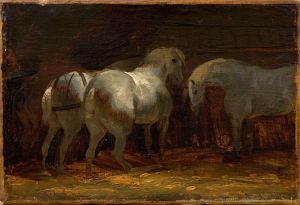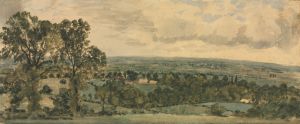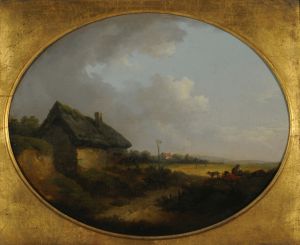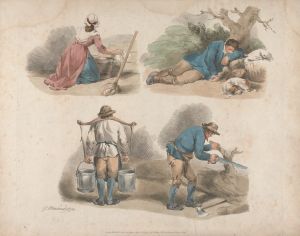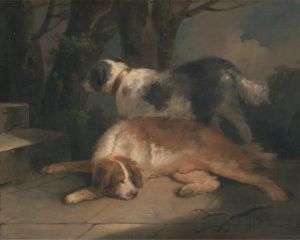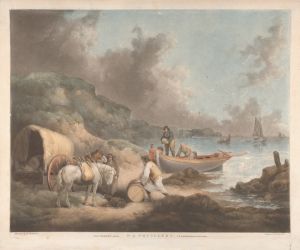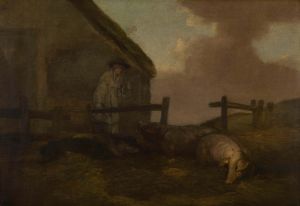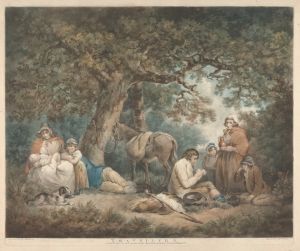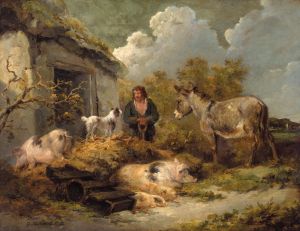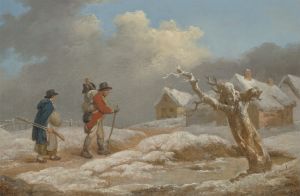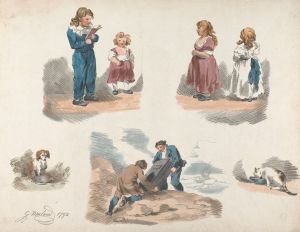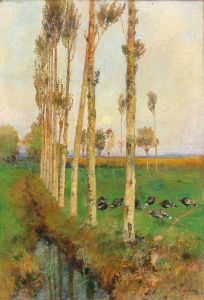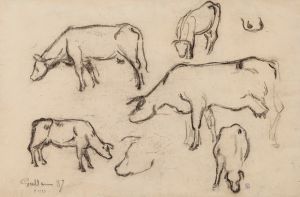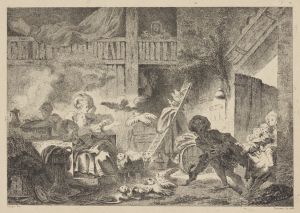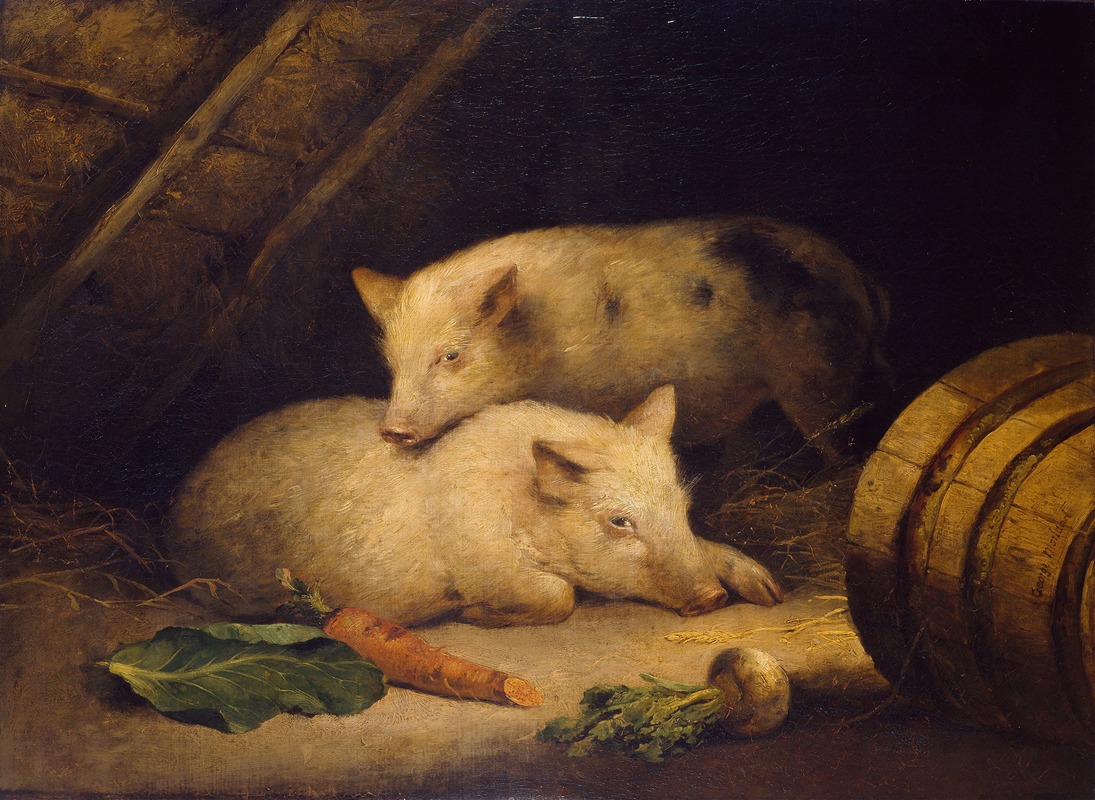
Pigs
A hand-painted replica of George Morland’s masterpiece Pigs, meticulously crafted by professional artists to capture the true essence of the original. Each piece is created with museum-quality canvas and rare mineral pigments, carefully painted by experienced artists with delicate brushstrokes and rich, layered colors to perfectly recreate the texture of the original artwork. Unlike machine-printed reproductions, this hand-painted version brings the painting to life, infused with the artist’s emotions and skill in every stroke. Whether for personal collection or home decoration, it instantly elevates the artistic atmosphere of any space.
George Morland was an English painter, born in London in 1763, who became well-known for his rustic and rural scenes. Among his many works, "Pigs" is one of the paintings that showcases his ability to capture the essence of rural life in 18th-century England. Morland's works often depicted animals, landscapes, and scenes of everyday life, and he was particularly noted for his skill in portraying animals with a sense of realism and vitality.
"Pigs" is a fine example of Morland's work, illustrating his keen observation and understanding of animal behavior and anatomy. The painting typically features pigs in a natural setting, often surrounded by elements that suggest a farm or rural environment. Morland's attention to detail in the depiction of the pigs' textures, such as their bristly hair and the muddy ground they inhabit, demonstrates his mastery of the medium and his dedication to realism.
Morland's ability to convey the character and personality of animals in his paintings was one of the reasons for his popularity during his lifetime. His works were sought after by collectors and art enthusiasts who appreciated his unique ability to bring rural scenes to life. The painting "Pigs" is no exception, as it captures the essence of farm life with a sense of authenticity and charm.
The composition of "Pigs" typically involves a careful arrangement of the animals within the landscape, creating a balanced and harmonious scene. Morland's use of light and shadow adds depth and dimension to the painting, enhancing the realism of the scene. The naturalistic portrayal of the pigs, combined with the artist's skillful use of color and texture, makes "Pigs" a noteworthy example of Morland's work.
Throughout his career, George Morland was known for his prolific output and his ability to work quickly, often completing paintings in a matter of days. Despite his success, Morland's life was marked by personal struggles, including financial difficulties and issues with alcohol. These challenges, however, did not diminish his artistic talent or his contribution to the genre of rural and animal painting.
Morland's paintings, including "Pigs," continue to be appreciated for their historical significance and their representation of 18th-century rural life. His work provides valuable insight into the social and cultural context of the time, reflecting the importance of agriculture and the rural landscape in England during this period.
In summary, George Morland's "Pigs" is a testament to his skill as a painter and his ability to capture the essence of rural life with authenticity and charm. The painting remains an important part of his legacy, illustrating his talent for portraying animals and rural scenes with a sense of realism and vitality that continues to resonate with audiences today.





